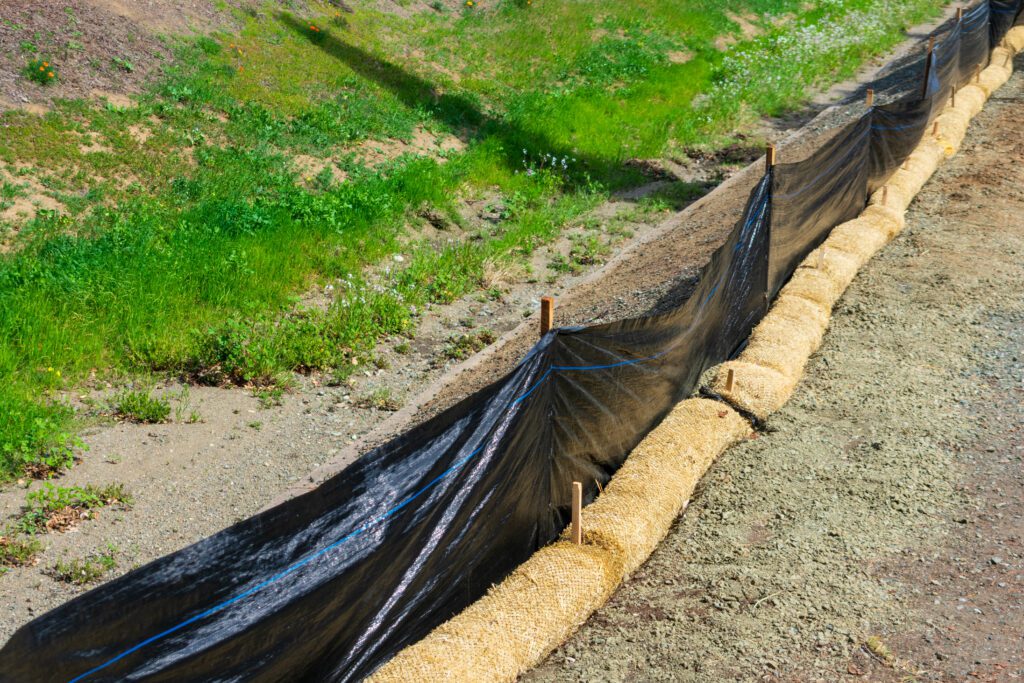Erosion and sediment controls (ESCs) must undergo regular inspections to ensure their effectiveness and integrity. Inspections help to identify issues and implement corrective actions quickly, reducing the risk of property damage or environmental, health, and safety violations.
Regulatory Background
If your construction site disturbs over one acre of land, it may fall under a state or EPA construction stormwater general permit. Typically, this will mandate routine inspections to minimize the discharge of stormwater polluted with sediment. Local city or county governments may also require a land disturbance or grading permit. Inspection frequencies vary by state and municipality, typically requiring weekly or bi-weekly checks, with additional rain event inspections. These inspections are intended to evaluate the installation, function, and ongoing maintenance of ESCs.
Key Inspection Areas
You can check your state construction general permit and local permit for the specific items to be addressed in your inspection. Some permits may require specific trainings or certifications for ESC inspectors.
At a minimum, inspections should assess the following areas of a site:
- All areas that construction staff have cleared, graded, or excavated but have yet to be stabilized
- All ESCs and other types of stormwater controls implemented at the site
- Material, waste, and equipment storage and maintenance areas
- All areas where stormwater typically flows, including drainage ways designed to divert, convey, and treat stormwater
- All points of discharge from the site
Construction staff should monitor weather forecasts closely. In anticipation of a rain event, they should inspect the construction site, ensuring all ESCs are clear and functioning properly.
Additionally, inspections are crucial when the site will be inactive for several days, such as over weekends or holidays. This proactive approach prepares the site for rain when workers are off-site and minimizes the risk of discharging sediment-polluted stormwater due to malfunctioning or inoperative ESCs. After a rain event, construction staff should inspect, clean, and repair any damaged ESCs. Adjust ESCs if necessary and red line the site’s Stormwater Pollution Prevention Plan (SWPPP) and/or ESC Plan to reflect the changes.
Documentation
It is critical to maintain proper documentation of the activities you perform during your erosion and sediment control inspections. Inspectors should use an inspection form or checklist to document the findings from each inspection. Check to see if your state or local government agency has an inspection form that they prefer you to use.
At a minimum, inspection documentation should include:
- Inspection date
- Name and title of personnel conducting the inspection
- A summary of inspection observations, including notes about required maintenance or corrective actions
- Weather station and rain gauge measurements, as applicable
- Signature of inspector
Additionally, if an unauthorized discharge is observed during the inspection, construction staff should identify, observe, photograph, and document the visual characteristics of the discharge and make any necessary notifications to state and local agencies.
You should store inspection reports and copies of your permits on site and keep them accessible for review by regulatory authorities.
Get Support
Effective erosion and sediment control inspections and maintenance programs demand dedicated resources and trained personnel to uphold compliance and prevent environmental harm. Educating site personnel on ESC principles enhances proactive identification of issues, safeguarding ESC integrity amidst construction activities.
Get the peace of mind you need with a compliance assessment from Tetra Tech’s environmental experts to ensure you are meeting all ESC compliance requirements. Contact us at [email protected] today.






